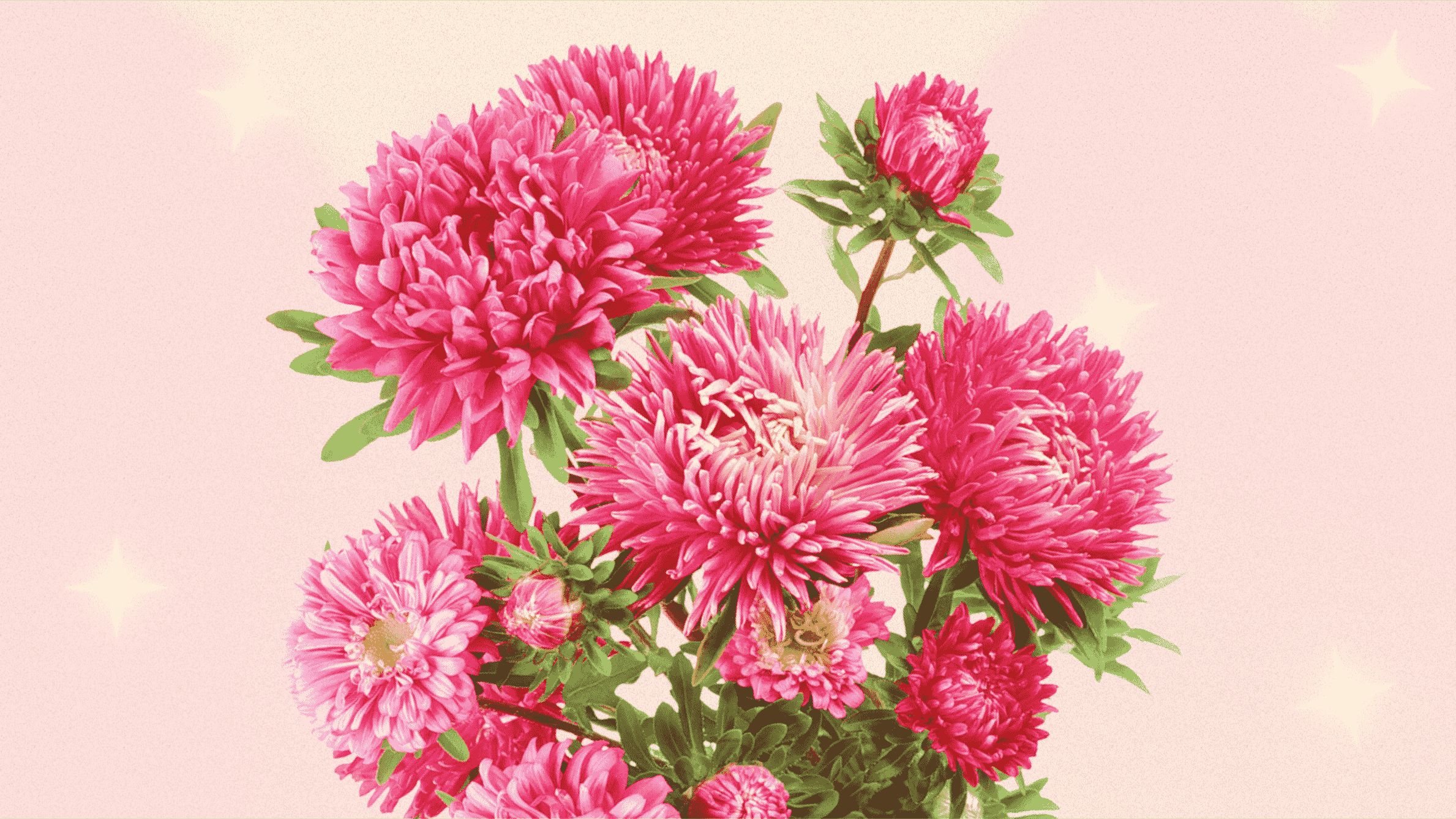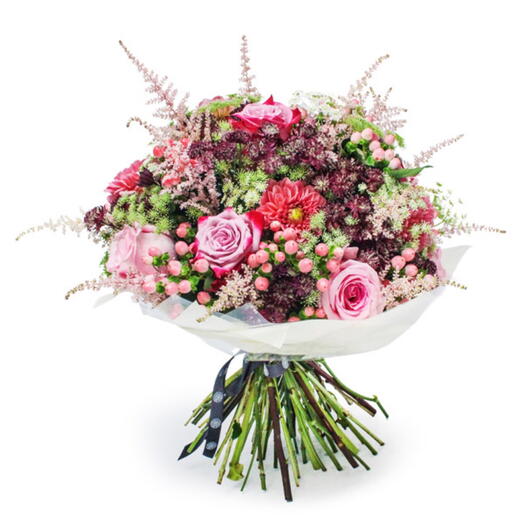
A combination of starry charm and floral elegance in one bloom? Why not! From its star-like beauty to its role as a symbol of love, the aster combines both an enigmatic shape and an intriguing meaning. Whether it’s a blue, pink, or red bloom, there are different concepts represented by each aster. This article is your gateway to understanding the simple yet profound significance that asters bring to our lives; let’s explore the magic of these star flowers!
What is the meaning of the aster flower?
The aster is more than just a pretty sight – it carries a special message. Across time and different continents, the aster flower’s meaning and symbolism have been tied to purity, affection, and mysticism. From Ancient Greece's magical clubs to being part of romantic expressions in Europe, the aster has always been associated with affection, endearing feelings, and mysterious yet benevolent spirits.

Aster's History and Origins
You might find aster flowers being referred to as "the goddess of love" in Greek mythology. Ancient Greece is actually where its history starts. Over time, they found their way across Europe and even to more distant regions, becoming a world-famous blossom.
Asters in Ancient Greece and Rome
The meaning of the aster flower’s name is simple – it’s “Star”, which perfectly reflects the flower's pointy petals. Legend has it that the goddess Astraea once wept after realising how unpure our world is, and from her tears, the marvellous star-shaped bloom was born. The Romans also highly regarded the aster, using it in various medicinal concoctions.
Asters in Christianity
In Christian tradition, asters originated from the tears of the Virgin Mary. As the main symbols of all things pure and divine, they were a common motif in religious artwork, where these white blooms were the tokens of the Virgin Mary's virtue.
Asters in Europe
As the blossoms spread to Europe, the meaning of the aster plant transitioned into that of passion and patience. Several European traditions suggest placing these blossoms on the grave of a loved one to demonstrate eternal remembrance.
Aster flowers and their meanings

The spiritual meaning of aster flowers
From the perspective of the spiritual world, these blooms represent potential spiritual growth and insight. Their star-like structure is thought to connect them to the celestial realm, which is why asters are believed to serve as a guiding light on one's spiritual journey.
The cultural significance of aster flowers
Asters stand for a variety of concepts across many cultures, including perceptiveness and kindness. They can also be found in ancient religions such as Buddhism, where it is viewed as the epitome of a clear mind. Also, aster flowers feature in Victorian flower language manuals denoting faith.

Aster flower meanings by colour
White asters

White asters symbolise beauty, a pure soul, and virtue, which is why they are frequently chosen for weddings or events dedicated to new beginnings.
Purple asters

Purple asters convey enchantment and mystique associated with royalty and valour, offering regal undertones when needed.
Red asters

Red asters express unwavering passion and happiness, so it’s not surprising to find them in numerous romantic arrangements. Their red hue helps intensify the emotions conveyed.
Blue asters

Blue asters are linked to calmness and serenity. They represent a soothing and tranquil atmosphere and help bring peace of mind to any space.
Pink asters

Pink asters convey gratitude and elegant grace. They are often given as a token of appreciation from dear friends and relatives.
Yellow asters

Yellow asters represent positivity and joy, proudly boasting the most optimistic meaning among all asters. They are an excellent choice for expressing cheerful feelings or simply making someone’s day a bit better.
Symbolism of the aster in different languages

Aster flower meaning in Hindi
In Hinduism, asters are the icon of the festival of Diwali, a triumph of light over darkness and the everlasting victory over evil. These flowers symbolise strength, faith, and hope in Hinduism.
Aster flower meaning in English
In many English traditions, asters point to one’s delicacy and elegance, making them a favourite in gardens and bouquets.
Aster flower meaning in other languages
Different languages and cultures view asters differently, from symbols of patience in Chinese culture to representations of delicacy in the Victorian flower manuals. However, regardless of the nation, these plants carry a predominantly positive message.
The Usage of Asters
These amazingly versatile flowers are found in countless locations, from ornamental gardens to bouquets and floral arrangements. Their ability to complement different flowers makes them a favourite among florists who use them in diverse floral settings.
When to give a bouquet of asters

Asters are suitable for various occasions, so it’s best to align their meaning with the theme of the celebration. As such, red asters are highly fitting for anniversaries, while the yellow varieties are most likely to bring joy on a birthday. So, before purchasing asters, take a look at their colour meanings.
What flowers go well with asters
Asters pair well with many other sorts of flowers, including roses, lilies, and chrysanthemums. Their adaptable nature allows them to enhance the beauty of diverse floral combinations, showcasing their inherent versatility.
Whether adorning gardens or gracing bouquets, asters continue to captivate hearts with their starry elegance and profound meanings. As they create an everlasting connection between the physical and the symbolic, they will undoubtedly infuse your celebration with happiness and positive emotions.










